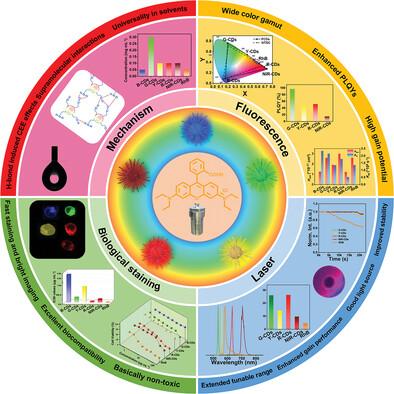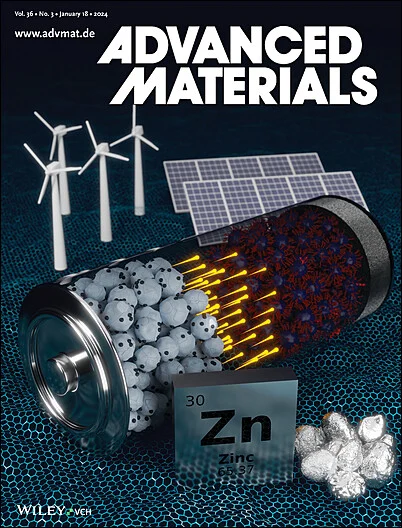Rhodamine B-Derived Low-Toxicity Full-Color Carbon Dots with Wide Tunable High-Stable Liquid-State Lasers
IF 27.4
1区 材料科学
Q1 CHEMISTRY, MULTIDISCIPLINARY
引用次数: 0
Abstract
Carbon dots (CDs) serve as a novel, non-toxic, cost-effective, and highly-stable solution-processable nanolaser material. However, compared to commonly used commercial laser dyes, CDs exhibit lower photoluminescence quantum yields (PLQYs), radiation transition rates, and gain coefficients. Consequently, this leads to higher laser thresholds that significantly impede the expansion of practical applications for CDs. Therefore, enhancing the gain performance of CDs is crucial in guiding the design of CD gain materials and promoting their practical applications. Herein, Rhodamine B (RhB) is employed as a sole precursor for the synthesis of full-color CDs (FCDs) with vibrant blue, green, yellow, red, and NIR (denoted as B-CDs, G-CDs, Y-CDs, R-CDs, and NIR-CDs) fluorescence through cross-linking, polymerization, and carbonization processes. The photoluminescence (PL) spectra ranged from 434 to 703 nm. Notably, the PLQYs and gain performance of FCDs are improved due to cross-linked enhanced emission (CEE) effects. Green, yellow, red, and NIR laser emission is achieved with lower laser thresholds and exhibited superior laser stabilities than RhB. Furthermore, cytotoxicity tests confirm that FCDs possess significantly lower toxicity than RhB. This study not only validates the applicability of CEE in CDs for developing multicolor gain materials but also advances the practical application of miniaturized lasers based on CDs.

求助全文
约1分钟内获得全文
求助全文
来源期刊

Advanced Materials
工程技术-材料科学:综合
CiteScore
43.00
自引率
4.10%
发文量
2182
审稿时长
2 months
期刊介绍:
Advanced Materials, one of the world's most prestigious journals and the foundation of the Advanced portfolio, is the home of choice for best-in-class materials science for more than 30 years. Following this fast-growing and interdisciplinary field, we are considering and publishing the most important discoveries on any and all materials from materials scientists, chemists, physicists, engineers as well as health and life scientists and bringing you the latest results and trends in modern materials-related research every week.
 求助内容:
求助内容: 应助结果提醒方式:
应助结果提醒方式:


